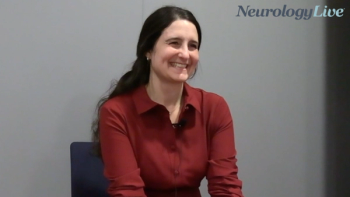
Gait Dynamics Highly Associated With Autonomic Dysfunction in De Novo Parkinson Disease
Patients with high dysautonomia scores showed significantly slower walking speed, decreased cadence, and shorter stride but increased time than the lower scored group in backward gait.
Recently published findings from a retrospective study showed that alteration in gait dynamics, especially backward gait, was highly associated with autonomic dysfunction in patients with de novo Parkinson disease (PD). Overall, these data could suggest that autonomic dysfunction might be a potential predictor of early gait impairment and risk of fall.1
The trial featured 38 patients with de novo PD who were followed up over a mean duration of 2.9 (±0.4) years. Patients’ dysautonomia was assessed through the Scales for Outcomes in Parkinson’s Disease-Autonomic Dysfunction (SCOPA-AUT), a self-reported questionnaire composed of 25 items to assess gastrointestinal, urinary, cardiovascular, thermoregulatory, pupillomotor, and sexual functions. With a total summed score of 69, patients who reported SCOPA-AUT scores above median value of 12.5 were assigned into the high score (PD-HSAS) group (n = 19), with the remaining patients reporting values below that (PD-LSAS; n = 19).
Senior investigator Kyum-Yil Kwon, Department of Neurology, Soonchunhyang University Hospital, and colleagues, aimed to investigate the impact of autonomic dysfunction on gait impairment and to examine the association between gait alteration and various forms of dysautonomia, especially in patients with de novo PD. To assess objective measures of gait dynamics, the GAITRite system with a 4.6-m-long walkway mat was used. Forward gait and backward gait were randomly assessed for each patient to lessen possible learning effects.
Between the 2 observed groups, there was no significant differences in baseline demographics and total scores of Unified Parkinson’s Disease Rating Scale (UPDRS)-III; however, the PD-HSAS group had higher (P = .020) Hoehn and Yahr stage scores than the PD-LSAS group. Compared with the PD-LSAS group, the PD-HSAS group showed significantly higher scores in the gastrointestinal domain of SCOPA-AUT (P = .005) and urinary domain of SCOPA-AUT (P <.001).
At the end of the follow-up period, investigators observed significant negative correlations between total SCOPA-AUT score and gait speed (rs = 0.542; P = .002) in backward gait, as well as stride length in forward (r = –0.430; P = 0.012) and backward (rs = –0.429; P = .013) gait. In terms of gait variability, there was a significant positive correlation between total SCOPA-AUT score and swing time variability in forward (rs = 0.537; P = 0.001) and backward (rs = 0.463; P = .007) gait. Additionally, the total SCOPA-AUT score was negatively correlated with swing phase (rs = –0.460; P = .007; rs = –0.463; P = .0007) and was positively correlated with double support time (rs = 0.409; P = .018; rs = 0.479; P = .005) in forward and backward gait.
"These findings are consistent with the literature showing that backward gait dynamics compared to forward gait dynamics are more closely related to motor symptoms and fear of fall in de novo PD patients," Kwon et al wrote. "These findings support that backward gait rather than forward gait might more susceptibly reflect the primary function of the basal ganglia in the early stage of PD. Furthermore, this result may represent the possible association between autonomic dysfunction and altered backward gait dynamics in de novo PD. Further clinically relevant studies are necessary to address this issue."
In a post-hoc analysis, the subscore of the urinary domain in SCOPA-AUT was significantly negatively correlated with stride length (rs = –0.368; P = .035; rs = –0.403; P = .020), swinging phase (rs = 0.418; P = .016; rs = 0.403; P = .020) and positively correlated with double support phase (rs = 0.348; P = .047; rs = 0.372; P = .033) in forward and backward gaits. Additionally, swing time variability (rs = 0.507; P = .003) had a significantly positive correlation in forward gait, and gait speed (r = –0.460; P = .007) had a significantly negative correlation in backward gait with the subscore of the urinary domain.
REFERENCE
1. Lee S, Lee M, Lee EJ, Kim RO, Kim Y, Kwon K. Association between gait and dysautonomia in patients with de novo Parkinson’s disease: forward gait versus backward gait. J Mov Disord. Published online September 7, 2022. doi:10.14802/jmd.22045
Newsletter
Keep your finger on the pulse of neurology—subscribe to NeurologyLive for expert interviews, new data, and breakthrough treatment updates.



































